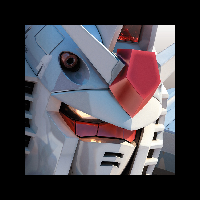הודעות: 10
שפה: English
Miland (הצגת פרופיל) 2 ביוני 2009, 09:17:54
Russ:To be genuinely useful for teaching a forgotten language to future civilizations..A simple picture dictionary showing basic concepts like "viro", "virino", "hundo", "unu", "du", "tri", etc..
Rogir:..why not engrave a lot of granite sheets with a book version of the Rekta metodo, and then add a literary classic..Both worth considering. The question is, how long can artefacts outlast the ravages of nature - the growth of jungles, earthquakes, robbery etc? The paintings of Lascaux, the seals and coins of Mohenjo-Daro and the pyramids -minus their marble covering, stripped by palace builders - seem to be the oldest artefacts we have. Do these provide clues as how to go about the task?
jan aleksan (הצגת פרופיל) 2 ביוני 2009, 10:10:41
But maybe the best solution is the graphene
richardhall (הצגת פרופיל) 2 ביוני 2009, 10:48:34
Rogir (הצגת פרופיל) 2 ביוני 2009, 12:47:46
richardhall (הצגת פרופיל) 2 ביוני 2009, 14:14:28
Rogir:But I consider it unlikely that after the destruction of civilization there will be any people left on the moon.There is that!
jan aleksan (הצגת פרופיל) 2 ביוני 2009, 15:08:04
Rogir:But I consider it unlikely that after the destruction of civilization there will be any people left on the moon.You're right, so we need to make the moon fall on the earth slowly, before the destruction of civilisation

Miland (הצגת פרופיל) 2 ביוני 2009, 18:51:05
russ (הצגת פרופיל) 3 ביוני 2009, 05:31:56
Rogir:But I consider it unlikely that after the destruction of civilization there will be any people left on the moon.So it depends on the goal of this project: Is it to help raise a collapsed civilization from the ashes? Or is it to pass on the secret advanced knowledge to another civilization when it has proven itself sufficiently ready to use it? (E.g. the monolith on the moon in 2001: A Space Odyssey.)

ceigered (הצגת פרופיל) 3 ביוני 2009, 07:37:18
Donniedillon (הצגת פרופיל) 3 ביוני 2009, 17:56:45





